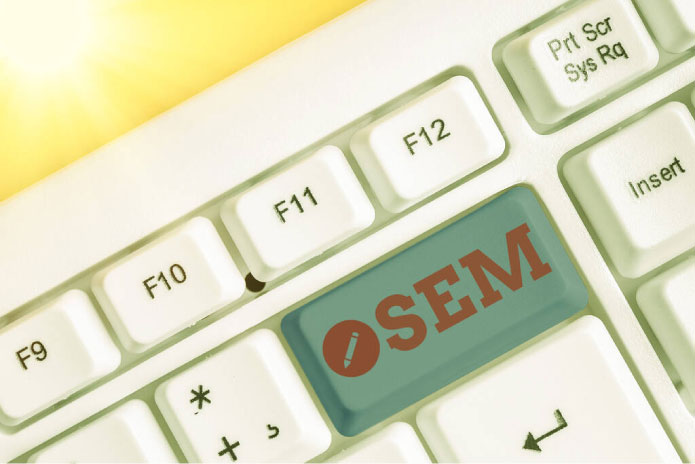The digital advertising market in Brazil continues to expand. According to the most recent study Digital Adspend 2025, carried out by IAB Brasil in partnership with Kantar Ibope Media, the investments in digital media reached R$ 37.9 billion in 2024, a growth of 8% compared to the previous year and an increase in 601tp3 t since 2020.
Social networks are the main destination for investments, with 53% of the total, followed by advertisements in search tools (28%) and portals (19%). The trade segment led the contribution with almost 20% of the total, followed by consumer services (10.9%) and electronic/computer (6.7%).
Another indication of transformation in the digital ecosystem was the arrival of the TikTok Shop to Brazil, in May 2025. The novelty allows integrated purchases of the platform's videos and has already gathered around a thousand sellers in the country since its launch. analysts estimate that the TikTok Shop can reach between 5% and 9% of Brazilian e-commerce until 2028, with a sales volume between R$ 25 and R$ 39 billion.
This combination of investment growth and platform revolution makes the digital environment highly competitive. In this context, Rafael Magdalena, director of us media performance, listed 8 ESSENTIAL TIPS — 4 for advertisers and 4 for agencies — to browse more efficiently and generate real impact on digital.
for advertisers
1) smart budget
Defining the ideal budget involves having an attribution model adjusted to the reality of the advertiser, considering different ways in which last click, multi touch and Marketing Mix Modeling, attribution models used to understand the impact of channels on conversion This will allow you to understand the saturation point and the representativeness of each one, in addition to opening space for experimentation. The synergy between awareness and performance strategies should also be considered to maximize ROI and avoid distortions in the analysis.
2) Engagement video
The creation of effective videos depends on the suitability of the format, message and dynamics for the audience and the platform. “Videos on social networks have different consumption behavior from formats such as pre-roll stories midroll, requiring specific routings for content with or without a skip option. There is no cake recipe: long or short videos can have different performances, and success depends on strategy, channel and experimentation”, says Magdalena.
3) Effective measurement
The metric should reflect the main objective of the company. For brand knowledge, CAC (Customer Acquisition Cost), ROI (Return on Investment) and ROAS (Return on Media Investment) are not the most indicated. For sales, CAC by channel and ROAS are priorities in everyday life. Incrementing is important in testing and experimenting, but it requires well-defined attribution models to avoid distorted results, as a channel can impact performance even without generating direct conversion (last click, last click).
4) Multi-channel integration
Unifying experience is a major challenge, which should start with the advertiser; without it, the journey will hardly be fluid. The use of ROX (return on experience) — more holistic than ROI (Return on Investment) — allows you to assess the multi-channel impact (online, physical, service, financial), helping to retain customers, increase revenue and reduce CAC (customer acquisition cost). It's no use having an award-winning campaign if the experience is bad and the churn (Customer Loss) High.
for agencies
1) Market differentiation
Standing out requires aligning the company's value proposition to the specific needs of the contractor. “It is necessary to find a balance between specialization and a wide range of services, with consulting, partners and bureaus to complement delivery and avoid limitations in specific challenges”, adds the specialist.
2) Data and competitive intelligence
With artificial intelligence facilitating automations, compiling data and monitoring the competition (clipping, RI — institutional relations) it has become more agile, however, it is necessary to have a team that knows the business and the market. A BI team with a technical domain (Business Intelligence) with technical mastery is not enough; it is necessary to understand the client and the context.
Data and competitive intelligence must be integrated in all areas — media, planning and creation — as these fronts directly impact the results. The use of A/B tests, neuroscience and AI to optimize creatives is increasingly common, and the media professional needs to resume their analytical role to avoid skewed planning.
3) Creativity and video innovation
It's no use investing in high technology if the public or the environment doesn't behave. Often, less is more. Immersive or interactive solutions can generate greater retention in experiences such as in-gaming, while pre-rolls and mid-rolls require a focus on capturing attention without exaggeration, so as not to seem forced. The public is more skeptical, and excess can ward off rather than engage.
4) Strategic partnerships
Strategic partnerships are even more important today, given the complexity of the market and the diversity of channels and solutions. “Partners help to face challenges, regain the public's attention and choose the best channel for the message. Agencies should diversify, test new means and avoid unique solutions, as the client will look for alternatives if the media plan is simple in a scenario where the creative and implementation process is increasingly automated”, concludes the director of US Media Performance.


